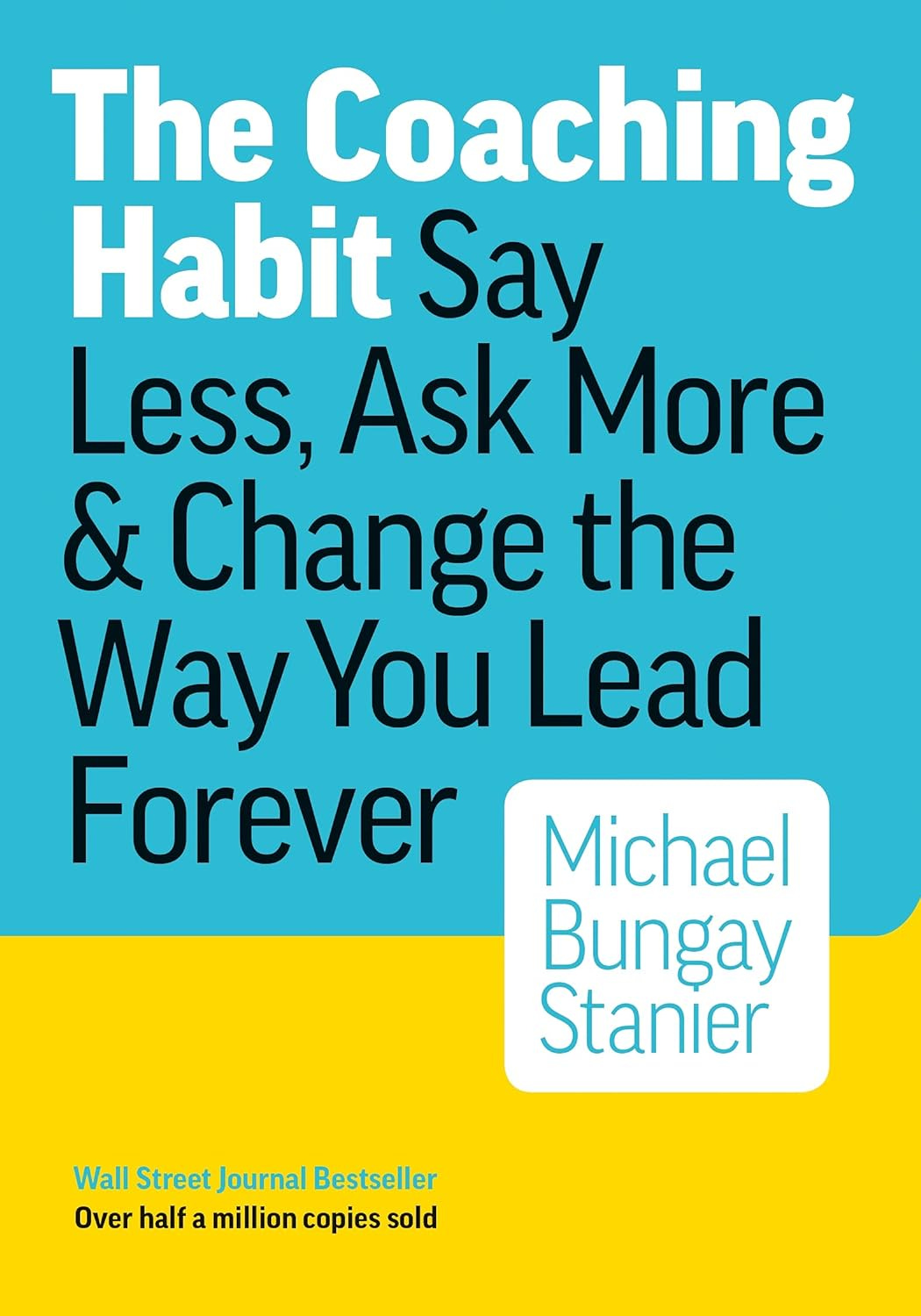BOOK REVIEW: THE COACHING HABIT
For great conversations to support your personal and professional relationships
Do you ever feel lost when in conversation with a colleague who needs to think through a decision, or a friend navigating difficult emotions? Whether it’s emotionally charged or not, it’s easy to feel like you don’t have a roadmap for getting anywhere.
Fortunately, Michael Bungay Stanier wrote one for you.
Years ago, well before I put out my shingle, I read this book. I was making and teaching art and art business, I had done some coaching, and been coached plenty, and I knew the powerful results coaching could get. I thought I might get a little better at all of it if I read a book. Stranger things, as they say.
Fast forward and I am doing this work full time. I went back to my notes on the book and the clear, easy to follow, and concise advice is still gold.
IF YOU’RE NOT A COACH, WHY SHOULD YOU CARE ABOUT THIS BOOK?
Some of the people I work with are leading teams and organizations. It’s become clear in recent years that a “coaching mindset” is one of the things that will improve leadership, team performance, and results. Parents, this applies to you. Partners, same. Got friends? Same. If you want to show up powerfully, and bring out the best in those around you, conversational tools from the coaching world will get you better outcomes.
I recently shared it with a group I coach and one of the members told me, excitedly, that they used the format for the conversation with a friend who needed support and it was amazing. At the end of the conversation the friend said that, wow, they feel so much better.
In fact, in my online course, I always have one of the participants (not a coach) ask ME the questions. I’ve played with this format for years and I STILL get new insights. Every time.
There are whole books and courses on how to lead, be a parent, a friend, do all of it with a “coaching mindset.” What Michael’s book does is give you a script you can follow that will essentially put you there. As you get more comfortable with the format, you can make it more your own.
WHAT ARE THE 7 QUESTIONS
I’ll share the questions and some insight into why it works.
What is on your mind?
And what else? (repeat until they say “I think that’s it”)
What is the real challenge here for you?
What do you want?
If you’re saying yes to this, what must you say No to?
How can I help? (I prefer ‘How can coaching help?’)
What is most useful or valuable here for you?
These are all very open ended questions and in many ways follow the Hero’s Journey model of guiding your conversation partner, the hero, through obstacles, past pitfalls, and to a more successful outcome. They lead from big ideas (What’s on your mind?) to specific outcomes (What do you want?) and past pitfalls (If you’re saying yes to this, what must you say no to?).
Most notably, it closes with a classic session-closer, by asking the friend, peer, or colleague what THEY found to be most valuable. It’s a great way to help the other person remember what they want to take with them.
The truth is, we’ve all had conversations where we discover a change we want to make, then we go back to our lives where our lives like us where we are. This last question gives us a machete to cut through that brush.
AND WHAT ELSE
I would add one thing to this powerful script.
There are hundreds if not more lists of “great coaching questions.” What really makes a question great is the context in which it is asked.
For example, at the beginning of a session I might ask a client if they want to do anything to ground themselves in the moment. Now, try that with my 13yo. Very different result.
So while context matters, I would add ONE question to his list.
After asking what they want, I would ask “What’s one small thing you’d like to do that would start the process of moving toward that goal?
“What do you want?” is a very open ended question, by design. Some people might share very practical outcomes and find it easy to keep going. But if the “what they want” is huge, massive, years off, unknown how to get there, then we don’t have the right ingredients for change.
By teasing out a small action step, the person on the other side of the conversation might start to feel like starting is possible, they might feel excitement to begin and see what happens. I’ve seen it, over and over again. Small steps lead to increased action.
Paid subscribers will see an audio below going much deeper on the power of each question, how to answer each, and how to use the questions in context.
Keep reading with a 7-day free trial
Subscribe to The Art of Transformation to keep reading this post and get 7 days of free access to the full post archives.




